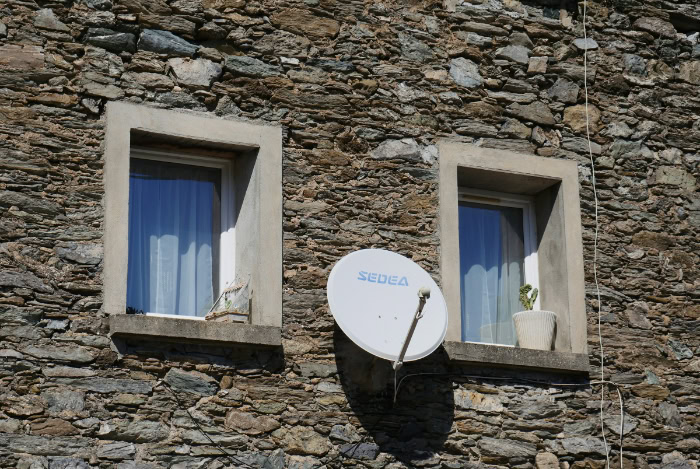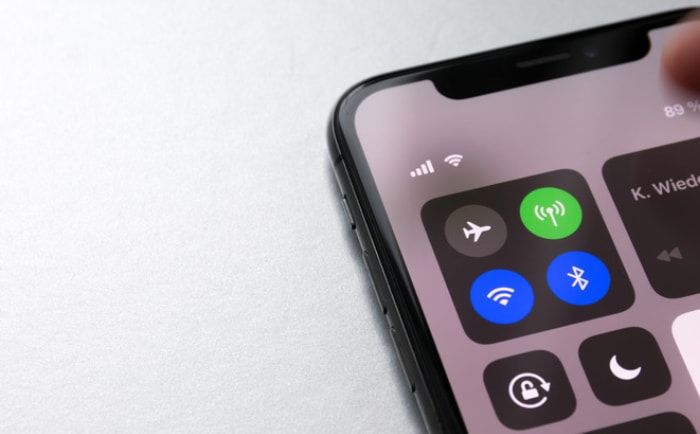Cable vs. Satellite TV: Factors to Help You Choose

Trying to decide between cable and satellite TV can feel overwhelming with so many factors to weigh. Some viewers look for the best possible price, while others want uninterrupted service, access to specific channels, or flexibility without long-term contracts.
Weather worries, rural availability, equipment hassles, and the lure of bundled deals all come into play. Choosing the right fit means considering not just what you’ll pay each month, but how each service matches your viewing habits and lifestyle.
Cost Comparison
Choosing between cable and satellite TV often starts with looking at the overall cost. Budget-conscious viewers want to know how much they’ll spend each month, but the total price goes beyond just the advertised rates.
Expenses can be affected by hidden fees, contract terms, and even the way prices are structured over time.
Monthly Pricing Ranges
Cable TV providers usually offer a wider range of pricing compared to satellite services. Basic cable packages can start as low as $20 per month, making them attractive for viewers who only want essential channels.
More extensive packages, loaded with premium content, can push monthly costs up to $140 or more. Satellite TV typically starts higher, with entry-level plans around $70 per month and top-tier packages costing up to $160.
While satellite plans often bundle more channels, the starting price can be a hurdle for those looking to keep expenses minimal.
Hidden Fees
Monthly subscription rates tell only part of the story, as both cable and satellite TV come with their own sets of additional charges. Cable customers often face recurring equipment rental fees for boxes and remote controls, and those charges can add up quickly if you have multiple TVs in the home.
Satellite TV may require an upfront payment for professional installation, dish mounting, or occasional maintenance, especially if you live in a challenging location. While some satellite companies advertise free installation with a contract, unexpected costs can arise if extra equipment or repairs are needed down the line.
Comparing the full list of potential fees helps avoid budget surprises later.
Long-Term Savings
Promotional pricing and long-term savings are important factors to weigh when picking a provider. Cable companies often lure new customers with steep discounts for the first year.
Unfortunately, those deals typically expire after twelve months, resulting in a sharp jump in the monthly bill. Satellite TV providers, on the other hand, are more likely to guarantee a locked-in rate for the length of a two-year contract.
While a contract may seem restrictive, it can provide peace of mind for those who dislike fluctuating bills. Evaluating the long-term costs rather than just the introductory offers gives a more accurate picture of what you will actually pay over time.
Reliability & Service Quality

For any TV viewer, few things are as frustrating as losing service right in the middle of a favorite show or a crucial sports moment. The way cable and satellite TV handle disruptions and serve different geographic locations can dramatically affect the viewing experience.
Weather Disruptions
Satellite TV signals travel from space directly to a dish at your home, which can leave the connection vulnerable during severe weather. Heavy rain, snow, or even dense cloud cover may cause temporary outages or a drop in picture quality.
Those living in regions prone to frequent storms might find themselves more susceptible to missed programming when the weather takes a turn for the worse.
Cable TV operates on a wired network that runs underground or along utility poles. As a result, service disruptions due to rain or snow become far less common.
Power outages and occasional line damage can still cause interruptions; however, signal stability remains one of cable’s biggest advantages. Households that prioritize consistency during all seasons may prefer the reliability offered by cable’s infrastructure.
Geographic Limitations
Location plays a major role in which TV service is truly accessible. Satellite TV holds a significant advantage in rural, remote, or mountainous areas where traditional cable lines may not reach.
A satellite dish only requires clear access to the southern sky, making it possible for households far from urban centers to enjoy a wide selection of channels.
Cable TV shines in cities and suburban neighborhoods, supported by robust infrastructure and customer support. Rural communities, however, are sometimes left out due to the high costs of extending cable networks to less densely populated areas.
For those in outlying regions, satellite TV often stands as the only practical choice, while urban dwellers benefit from the convenience and dependability of cable.
Channel Offerings & Content

Choosing a TV provider isn’t just about cost or reliability. For many viewers, the variety and quality of programming play the biggest role in satisfaction.
Cable and satellite TV have carved out their own niches in terms of content choices, each with unique strengths when it comes to local programming and access to specialized channels.
Local Programming
Staying up to date with regional news, weather, and sports is a priority for many households. Cable TV providers usually excel here, offering a robust lineup of local channels as a standard part of their packages.
That means viewers can easily tune in to city council meetings, hometown sports, and community events with minimal effort. For families or individuals who rely on local content to stay connected to what’s happening in their area, cable often makes it simple and seamless.
Satellite TV presents a different experience. While most satellite providers include the major national networks, they sometimes struggle to deliver the same breadth of region-specific coverage.
Local stations may not always be available, or they might require additional equipment or upgrades. Rural residents may notice gaps in local content that cable customers in cities don’t have to think about.
For those who consider regional channels a vital part of their viewing routine, this limitation can be a deciding factor.
Premium Options
Entertainment tastes are increasingly global, and here, satellite TV often pulls ahead. Satellite providers are well known for offering wide access to international channels, specialty sports programming, and niche content that can be hard to find elsewhere.
Fans of foreign films, international news, or sports leagues from other countries will appreciate the broader selection that satellite can provide. Packages are often tailored to include multicultural offerings, making satellite a popular choice for diverse households.
Cable providers, on the other hand, are adapting to new viewing habits by partnering with major streaming platforms. Subscribers may find HBO Max, Netflix, or Disney+ bundled into their cable package at a discount, or with easier billing through one provider.
This can be a major plus for those who want both live TV and on-demand content without piecing together multiple accounts. While cable’s traditional channel lineup might not match satellite for global variety, the added streaming perks can create a more comprehensive entertainment solution for binge-watchers and families alike.
Installation & Equipment

Setting up your TV service can be a major consideration, especially if you value convenience or need flexibility for your living situation. The installation process and equipment requirements can vary widely between cable and satellite providers, so knowing what to expect from the start can help prevent headaches later on.
Setup Complexity
Getting started with cable TV often feels straightforward. Most cable providers require only a coaxial cable connection and a compatible receiver or set-top box, which can be plugged in and activated with minimal fuss.
For apartments or homes that already have cable wiring installed, activation might be as simple as connecting a few cables and calling customer service to get things running. Self-installation kits are common, saving time and often side-stepping installation fees.
Satellite TV installation involves a bit more effort. Setting up a satellite dish requires mounting it outside your home, usually on the roof or balcony, and running cables inside to the receiver.
The dish must have a clear line of sight to the southern sky to receive signals, so nearby trees or buildings can sometimes cause complications. Professional installation is typically included with most contracts, but coordinating the setup can take a few days and sometimes requires adjustments if the initial signal is weak.
Portability
Portability presents another major difference. Cable TV operates through fixed infrastructure tied directly to your address.
If you move, transferring the service means scheduling a new installation and possibly incurring additional costs. Cable is best suited for permanent residences or those who do not anticipate frequent moves.
Satellite TV offers remarkable portability, appealing especially to RV owners, frequent travelers, or families who live seasonally in different locations. Portable satellite dishes and compact receivers make it possible to access the same programming on the road or even in remote campsites, provided you can position the dish correctly.
The freedom to take your entertainment with you gives satellite a clear edge for anyone whose lifestyle includes regular travel or a mobile home setup.
Contracts & Flexibility

The way TV providers structure their contracts and add-on services can make a huge difference in how satisfied you feel with your plan. Some viewers crave flexibility and short-term options, while others are willing to make a longer commitment in exchange for steady pricing or added perks.
Commitment Terms
Satellite TV providers are well known for their two-year contract requirements. These agreements typically lock in your monthly rate and can help you avoid price hikes for the duration of the contract.
However, the trade-off is that early cancellation often comes with steep penalties. Households who value stability and plan to stick with one provider for several years may appreciate the predictability that satellite contracts offer.
Cable TV, on the other hand, frequently allows for month-to-month plans without forcing you into long-term commitments. The flexibility to start or stop service with minimal hassle appeals to renters, students, or anyone whose living situation might change unexpectedly.
While introductory offers from cable can be enticing, it is important to pay attention to rates once initial promotions end since prices can increase if you remain without a contract.
Bundling Perks
Bundled services can reshape the value proposition for many cable customers. Most cable companies offer discounts when you combine TV with high-speed internet or landline phone service.
Managing all your communications and entertainment through a single provider simplifies billing and sometimes unlocks special features, like increased DVR storage or premium channel previews. For families who rely on connectivity just as much as television, these deals can make cable an especially attractive choice.
Satellite TV providers generally focus on delivering television content alone. While some may partner with internet providers in specific regions, the options to bundle are usually limited compared to cable.
The focus remains on TV programming, which can appeal to those who want a straightforward setup without extra services or the temptation to add on more than they truly need. For homes that already have a reliable internet setup or do not need a traditional phone line, satellite offers a simpler, more streamlined approach.
Conclusion
Finding the right fit between cable and satellite TV comes down to your unique priorities. Those on a tight budget or living in an urban setting may find cable TV’s lower starting prices, local programming, and flexible contracts particularly appealing.
Cable’s bundled internet and phone options can also make it the practical choice for families seeking convenience in billing and service.
For viewers in rural or remote areas, satellite TV’s broad reach steps in where cable infrastructure might not exist. Households passionate about international or niche content often prefer satellite’s expansive channel selection and the ability to take their service on the road.
Weather disruptions and required long-term contracts, however, are important considerations for anyone leaning toward satellite.
Ultimately, your ideal TV service will reflect your priorities. Take some time to weigh monthly costs, local channel needs, bundling potential, and your willingness to sign a contract or put up with the occasional service hiccup.
With a clear sense of your must-haves, you’ll be able to choose a provider that keeps your home entertained and satisfied.


